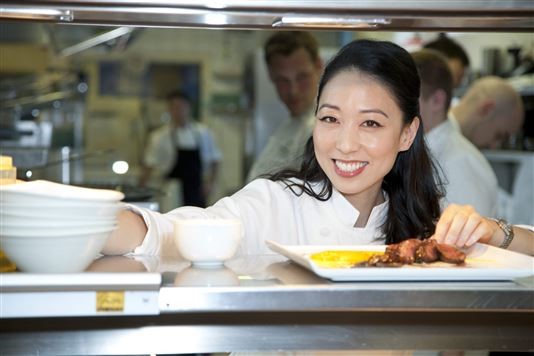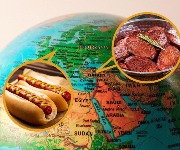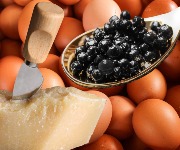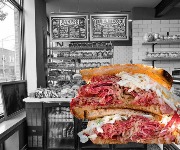Why Korean food could be a hit in 2015

Matt Brady meets Korean-American chef Judy Joo to talk about Korean food, culture and why vodka helps to make the best fried chicken.
Korean food is being hotly tipped to be the flavour of 2015, and if you’ve been lucky enough to sample its delights, you’re probably not inclined to disagree.
I caught up with Korean-American chef Judy Joo at the opening of her new restaurant Jinjuu. Judy presents the soon-to-be-aired TV show Korean Food Made Simple (Food Network, 6:30pm from 26th January), and very recently became a British citizen. So who better to ask all about the cuisine, the culture, and why Britain will want its fill of Korean food?
Why will it be a hit?
Korean food has been highlighted by various people and companies in the past few months to be the food trend of 2015, and Judy agrees that it’s likely. “Korean food had a massive year in America last year, and these trends tend to cross the pond. There’s tons of interest,” she explains.
If you haven’t tried Korean food before, you might be tempted to stick with what you know. However, in my experience it’s a very moreish cuisine that doesn’t leave you feeling bloated. “It’s actually quite balanced,” comments Judy, “because there’s a little bit of everything and something for everyone. There are a lot of vegetables involved and the cuisine has very punchy, vibrant flavours.”

These flavours, she continues, include “chillis, garlic, sesame seeds, Korean barbecue, tofu… flavours that you’ve had before but executed in a different way.” Since there’s a familiarity to be found in the dishes, there’s something comforting about them – but at the same time, the cooking is different enough to excite. “It’s a different flavour profile, but it’s not so ‘out there’.”
Great Korean dishes
“My favourite dish is something called sundubu jjigae, which is a silken tofu spicy seafood soup,” says Judy, commenting that when she was younger, her mother would make it for her when she wasn’t feeling well. “I think the flavours are so dynamic. It’s got vegetables, seafood, it’s spicy… I just love it!”
But there are also delicate light meals like ginseng chicken soup, and on the other side of the divide again, budae jjigae is a spicy stew that can contain pretty much anything, though chilli is a necessity. And then there is the Korean take on barbecue, where the meat is marinated in garlic, chilli, sesame oil, ginger, soy sauce and other spices.

Seared on a very hot grill or griddle pan, and served on rice, it’s as straightforward as a classic steak meal but the marinade is totally worth the small amount of extra effort, as it gives the meat a spicy edge that’s perfectly rounded.
Kimchi, a side dish made of fermented vegetables, is also very popular, and can spice up basic snacks like rice a treat, particularly when topped with a fried egg.
KFC: Korean fried chicken
One of the most familiar favourites in South Korea is fried chicken – the “better” KFC. Judy uses vodka in her batter, and I wondered why that was. “The vodka prevents gluten development, so it helps you achieve a crispier and thinner crust, without it getting tough.”

And her recipe also calls for matzo meal, which is used to make unleavened bread, eaten by Jews at Passover and other religious occasions when they’re not permitted to consume yeast. Apparently, it’s a well-used ingredient in New York, and Judy says its perfect for fried chicken because it holds its crispy texture for longer and doesn’t get as soggy as regular breadcrumbs.
“Matzo meal and vodka are the two secret ingredients that make my Korean fried chicken so damn good!” laughs Judy.
Food culture
Korean has a word for food that’s eaten while you drink: ‘anju’. Judy says that in Korea you always eat when you drink, and she has developed a bar snack-style menu for the ground floor of Jinjuu around the concept of ‘anju’.
The steamed dumplings they serve up here are excellent, dashed with salty soy sauce and sesame seeds, while the breaded jalapeños stuffed with beef (poot gochu jeon) strike a balance of fiery heat with moreish umami seasoning. Even while your mouth burns from the last, it's impossible not to consider swooping in for another.
But the great food to be found in Korea extends well beyond the end of the bar. “It doesn’t matter what you’re doing, there’s always food involved. I’ve been to a thousand baseball games in the States – you have your popcorn, peanuts, hot dogs and you drink beer… well in Korea, it’s like a public feast, and everyone is pigging out.”

“There’s pizza, hot dogs, kimbap (seaweed and rice rolls), soondae (blood sausage), every single thing under the sun. You would think that the whole country would be overweight but they’re not!”
Will you be trying out Korean food this year? Have you already? What’s your favourite dish? Let us know in the Comments below.
Try out these recipes from Judy Joo:
Korean fried chicken with pickled radish cubes recipe
Korean roasted pork belly bossam recipe
Simple traditional bibimbap recipe
Most Recent
Comments
Be the first to comment
Do you want to comment on this article? You need to be signed in for this feature








